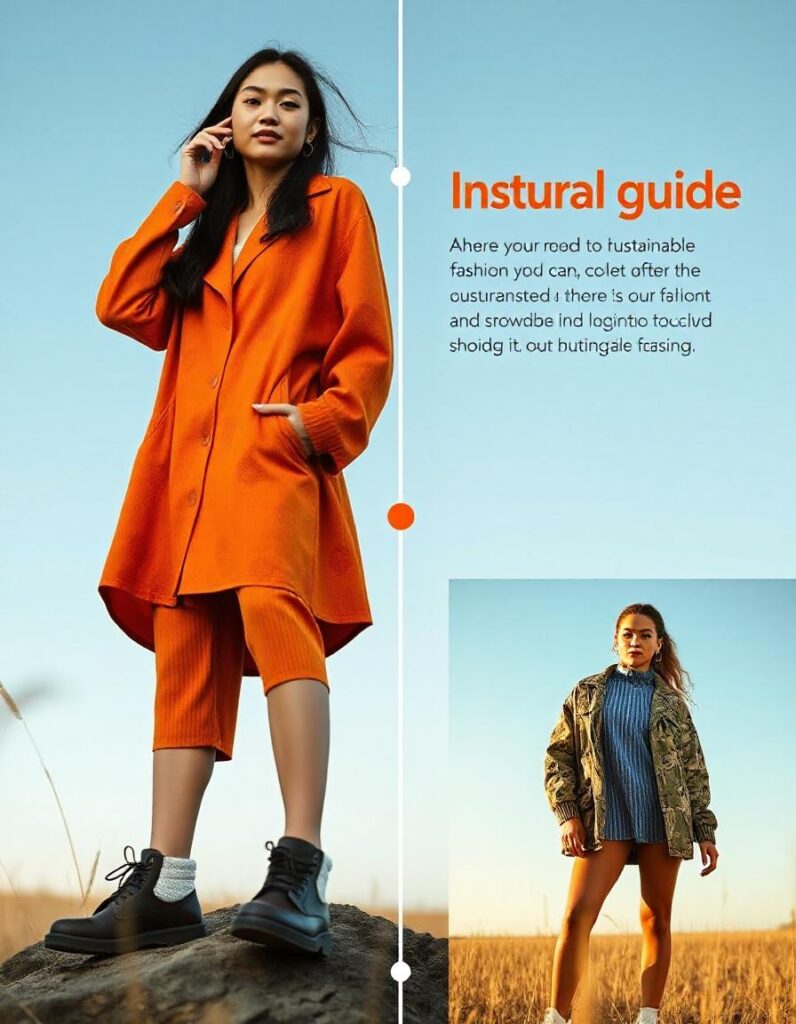Creating a sustainable fashion collection is not only an ethical choice but also a smart business strategy in today’s environmentally conscious market. As more consumers prioritize sustainability, designers and brands are embracing eco-friendly practices to reduce their environmental impact. Here’s a guide on how to create a sustainable fashion collection that aligns with these values while maintaining style and quality.
1. Choose Sustainable Materials
The foundation of a sustainable fashion collection starts with the materials. Opt for eco-friendly fabrics such as organic cotton, linen, hemp, or recycled materials like polyester and nylon. These fabrics are produced with minimal environmental impact, using fewer chemicals and less water. Additionally, consider innovative materials like Tencel or Piñatex, which are made from renewable resources and have lower carbon footprints.
2. Prioritize Ethical Sourcing
Ethical sourcing is crucial in sustainable fashion. Ensure that the materials you use are sourced from suppliers who adhere to fair labor practices and environmental standards. This includes paying fair wages, providing safe working conditions, and minimizing environmental harm. Working with suppliers who are transparent about their practices helps build trust with consumers and reinforces your brand’s commitment to sustainability.
3. Embrace Slow Fashion Principles
Slow fashion emphasizes quality over quantity, encouraging the production of timeless pieces that are designed to last. Focus on creating versatile, durable garments that consumers can wear for years rather than just a season. Avoid following fast fashion trends that promote disposable clothing, and instead, design with longevity and classic appeal in mind.
4. Reduce Waste Through Design
Incorporate zero-waste design techniques to minimize fabric waste during production. This could involve using pattern-making strategies that utilize every inch of fabric or creating garments that can be easily altered or repaired. Additionally, consider upcycling, where you repurpose leftover materials or old garments into new designs. Reducing waste not only conserves resources but also adds a unique, eco-friendly touch to your collection.
5. Focus on Eco-Friendly Production Processes
Sustainable fashion goes beyond the materials—it’s also about how the garments are made. Choose manufacturers who use eco-friendly production processes, such as water-efficient dyeing techniques, energy-saving technologies, and reduced chemical usage. Consider local production to lower transportation emissions and support local economies. Partnering with manufacturers that prioritize sustainability ensures your collection is produced with minimal environmental impact.
6. Design for Versatility and Functionality
Sustainable fashion should be both stylish and functional. Design pieces that are versatile, allowing them to be worn in multiple ways or for various occasions. For example, create reversible garments, modular clothing, or items that can transition from day to night. Versatile designs encourage consumers to buy less while getting more value from each piece, contributing to a more sustainable wardrobe.
7. Implement Transparent Marketing
Transparency is key when marketing a sustainable fashion collection. Clearly communicate your sustainability efforts to consumers, including the materials used, ethical sourcing practices, and eco-friendly production methods. Transparency builds trust and credibility, encouraging consumers to support your brand. Use labels, tags, and online content to educate customers about the environmental benefits of your collection.
8. Consider the End-of-Life Impact
Plan for the end-of-life stage of your garments by designing for recyclability or biodegradability. Choose materials that can be easily recycled or decomposed, and consider offering take-back programs where customers can return old garments for recycling or upcycling. By thinking about the full lifecycle of your products, you help reduce waste and contribute to a circular fashion economy.
9. Incorporate Sustainable Packaging
Sustainable packaging is an important aspect of an eco-friendly fashion collection. Use packaging made from recycled or biodegradable materials, and minimize excess packaging wherever possible. Consider offering reusable packaging options, such as fabric bags or boxes that customers can use again. Sustainable packaging reinforces your brand’s commitment to the environment and enhances the overall customer experience.
10. Educate Your Consumers
Finally, educate your consumers about the importance of sustainability in fashion. Use your platform to raise awareness about environmental issues, ethical practices, and the benefits of sustainable fashion. Encourage customers to make mindful purchasing decisions, care for their garments properly, and support eco-friendly brands. An informed consumer base is more likely to appreciate and support your sustainable fashion collection.
Conclusion
Creating a sustainable fashion collection requires thoughtful choices at every stage of the design and production process. By choosing sustainable materials, prioritizing ethical sourcing, and embracing slow fashion principles, you can develop a collection that is both stylish and eco-friendly. With a focus on reducing waste, transparent marketing, and consumer education, your brand can make a positive impact on the fashion industry and the environment, while appealing to a growing market of sustainability-conscious consumers.
